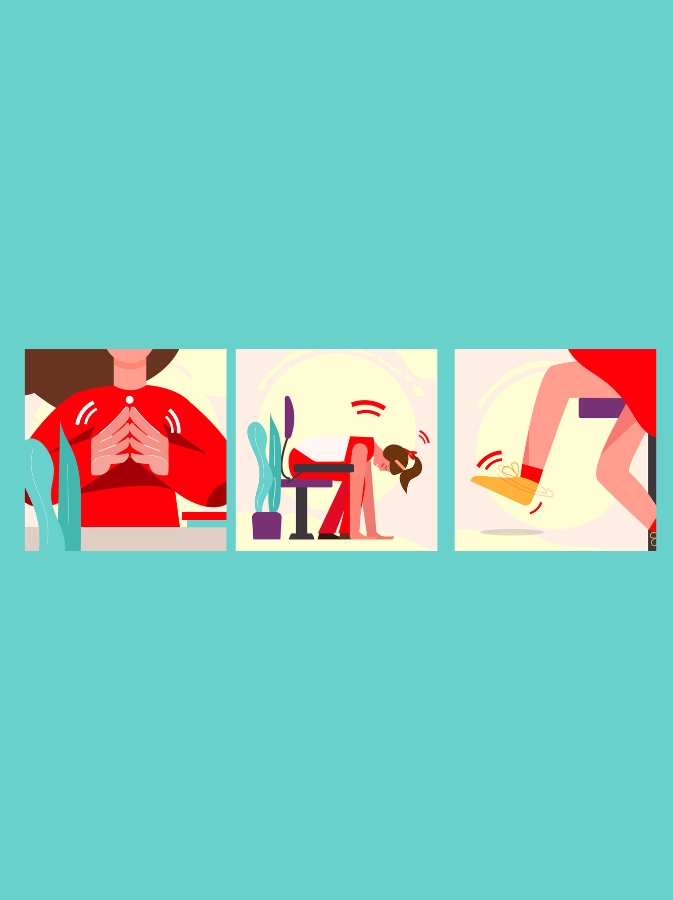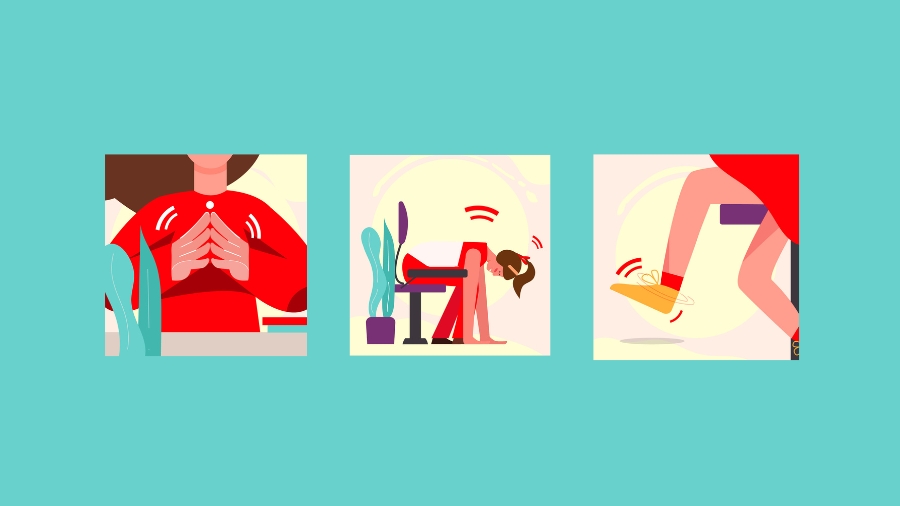If you’re a desk jobber, working can be a pain in the back, neck, wrists and other unmentionable body parts – and constant changes to your work environment and routine due to Covid-19 might be making things worse.
Staying in one position, poor posture and repetitive motions like typing continuously are all normal among office workers who spend most of their workday in front of a computer screen. While seemingly harmless, they can cause soreness, tightness and weakness but that’s not all.
According to Dr Aravind Kumar, orthopaedic and spine surgeon at Parkway East Hospital and Mount Elizabeth Novena Hospital, our increasingly sedentary lifestyle, both at work and at home, affects our collective health. “The three main areas affected by this pandemic of sitting are musculoskeletal health, cardiovascular health and metabolic health. The long-term consequences on cardiovascular health and metabolic diseases such as diabetes are still to be realised.”
Benefits of micro-breaks for office workers
Taking regular breaks from sitting at your desk can help prevent pain. Take it further by doing deskercise or desk-friendly exercises several times daily:
- Keeps joints flexible
- Promotes blood circulation
- Improves focus


The impact of changing workspaces during the Covid-19 pandemic
Covid-19 work-from-home arrangements might have exacerbated “working pains”. Bad posture at home workspaces – kitchen counter/bedside table/stacked-up cushions/your thighs or any stable surface for your laptop – plus longer working hours likely triggered new aches and pains. Not to mention stress.
“It’s not surprising that as people began repurposing these unhealthy environments into workspaces, there was an explosion of health issues that’ve always affected office workers, such as neck pain, back pain and shoulder. This was most evident during the first lockdown in 2020.
“The main trigger is the loss of an ergonomic working environment that’s found in most office settings. Ergonomics refers to the principles underpinning safe and healthy interaction between humans and the elements that constitute their work environment. This includes the office desk, chair, computer monitor, keyboard and mouse. For many, the home environment is largely unsuited for working long hours, especially on a computer laptop.”
Will the current hybrid office-and-home working arrangement ease your agony? According to Dr Kumar, repeated shifts between office and home working aren’t exactly helping.
“Employees have had trouble adjusting quickly to these changes. In a way, early recognition of the prolonged need for working-from-home could’ve allowed workers, and office management, to institute healthier working practices at home.”
His patients have learnt to cope in various ways. Some have opted for standing desks while others have replaced chairs with gym balls. A few have even turned their treadmills and exercise bikes into workspaces with cunningly designed surfaces for their laptops.
“Stretching every 30 to 45 minutes also helps,” says Dr Kumar. “There needs to be greater awareness and mindfulness among workers and some discipline that can lead to frequent breaks, stretches and exercises throughout the workday and beyond. Management should also facilitate a healthier work environment which includes not just the hardware but also encourages workers to take such wellness breaks. Failure to change now will lead to a tsunami of sickness resulting in disability and lost productivity.”
Start a movement for your physical health
Taking regular breaks from sitting at your desk to stand, walk around and move about can help prevent or ease posture problems and pain. Take it further by doing deskercise or desk-friendly exercises several times daily and use a smartphone app to remind you when it’s time for your wellness break. It’s an easy way to make fitness a part of your workday and has a host of benefits:
- Keeps joints flexible
- Builds strength
- Tones muscles
- Promotes blood circulation
- Improves focus and calm
8 “deskercises” to stay active on the job and keep aches at bay
Little space and no equipment needed. No sweat stains. Nothing to feel shy about. These moves are a good start to your deskercise routine. Gradually build up to more reps or work more sets into your day to see results!
Neck rolls
While seated at desk, gently drop head to one side, ear towards shoulder. Keep shoulder level. Hold 5 secs. Repeat on other side. Then drop chin towards chest. Hold 5 secs. Repeat with head tilted backwards. Stretches neck muscles and improves blood flow to brain.
Forward bend
Sit up straight, hands at waist and bend forward, keeping spine straight. Let hands reach towards ground and drop your head. Hold for up to 60 secs. Gently stretches back and relaxes.
Hand push-ups
Place palms and fingers together, fingers pointing to sky. Keeping fingertips touching, push hands off and away from each other. Bring hands back and repeat. Relieves tension in fingers.
Leg lift
Sit on edge of chair then raise one leg so it’s parallel to floor and in line with hip. Repeat on other side. Strengthens and shapes hips and thighs.
Arm stretch
Raise one arm and bend elbow, reaching towards opposite side. Use other hand to pull elbow towards your head. Hold 20 secs. Repeat on other side. Works triceps.
Body twist
While seated in a wheelie chair, raise feet off floor, rest palms on desk and use abs to gently swivel to the left. Hold 10 secs, then swivel to the right. Works lower back, abs and thighs.
Seated cycling
Sit on edge of chair, hold on to arm rests. Bring knees up to chest, as if pedalling a bike. Loosens joints and tones abs.
Ankle roll
Rotate ankle clockwise then anti-clockwise, 10 times each. Repeat on other side. Keeps ankles loose and prevents pins and needles.








